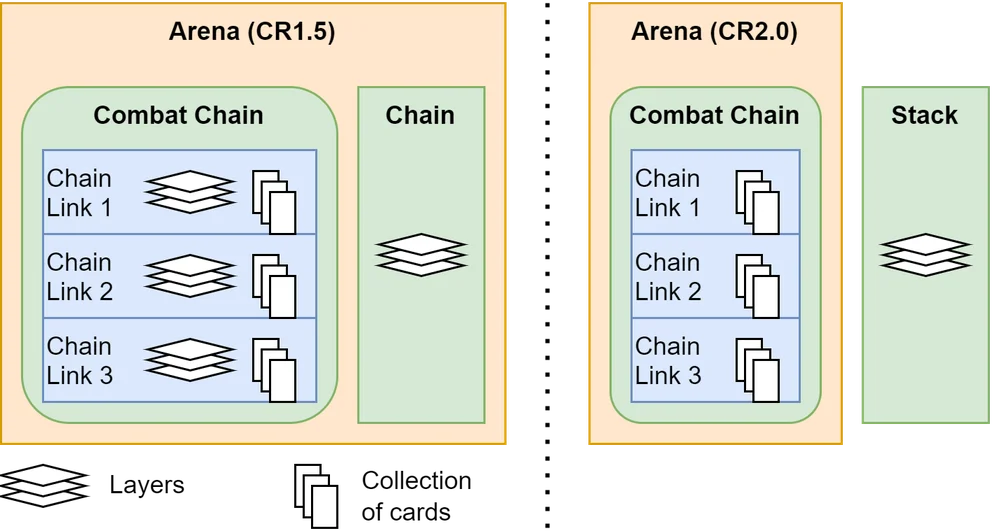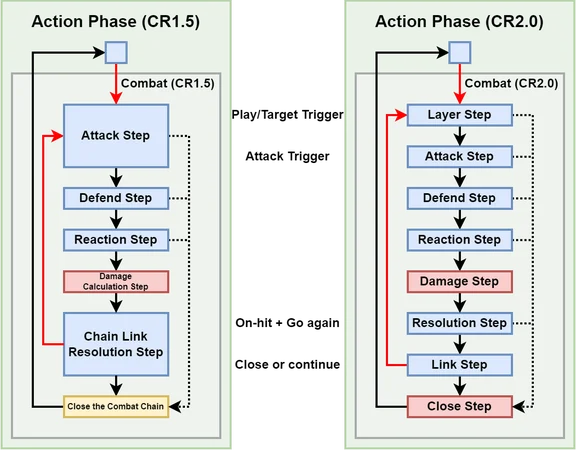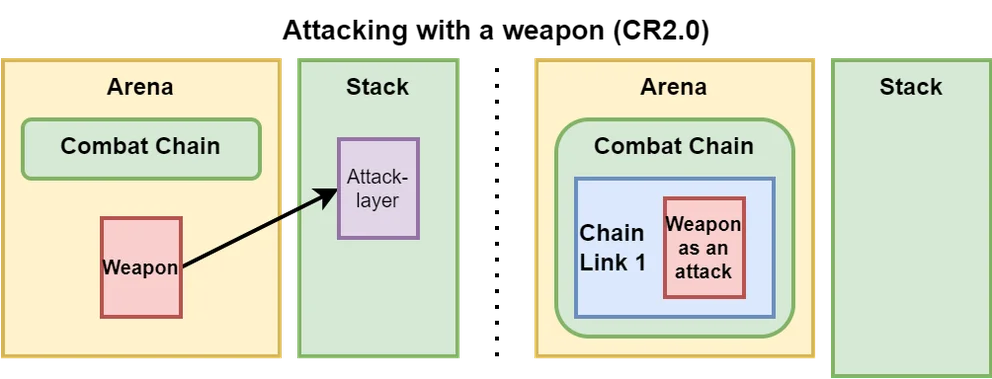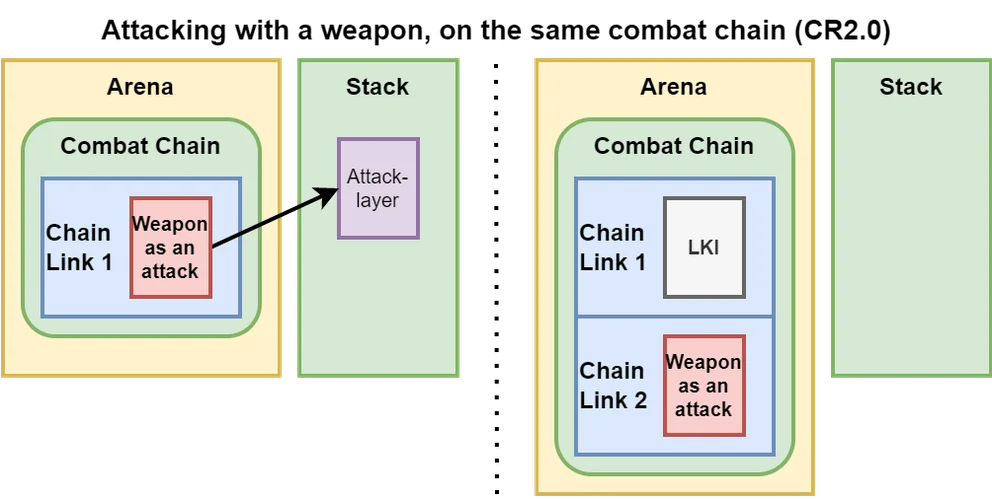From 14 March 2022 the Comprehensive Rules v2.0 will take effect. In preparation for this we have released a preview of the updated rules ahead of time so that players and judges have time to familiarize themselves with the new document ahead of the rules coming into force. We would like to remind everyone that the current season of ProQuest is being played under the Comprehensive Rules v1.5, and the new rules will not come into effect until the ProQuest season has concluded.
This week we will be looking at some of the larger overall changes to the Comprehensive Rules. In particular we will be looking at changes that apply to the average player, but from the perspective of someone who is interested in the specific mechanics and terminology of the game as a whole.
Next week we will be covering the extent of the changes to card interactions to prepare you for when the CR2.0 comes into effect.
Why the need for new Comprehensive Rules?
As the game begins to expand, both with the player base and the complexity of interactions, a formal document that ensures there is an answer to every question is needed to prevent ambiguity and misinformation. This is even more urgent with the advent of Tier 4 tournaments such as Pro Tour, where there is little room for error when it comes to judging.
The current Comprehensive Rules 1.X has served its purposes since its release alongside Monarch, but over the last year it has become apparent that an even more in-depth and comprehensive approach was required.
The new Comprehensive Rules 2.0 formalizes future syntaxing for cards to ensure that they are consistent with intentions; provides quality of life features such as hyperlinking and an intuitive chapter structure; and lays the foundations for future sets that push the limitations of the rules.
We hope that these rules will aid our judge community, and over the next few weeks we will be delving into the specifics of the changes, with particular emphasis on important interactions and complicated cards (e.g. Korshem).
General Concepts

Objects and properties
Objects are the primary entity in the game of Flesh and Blood. Objects within the game are always in a zone, and have properties that define how that object operates within the game.
Objects include tangible objects, such as cards and tokens, and intangible objects such as activated and triggered layers created by abilities and effects.
Object properties include numeric properties, such as power and defense; and other properties such as abilities and types.
Abilities
Abilities are an object property, and generated effects. Abilities are categorized based on how they generate their effects.
- Activated abilities: An activated ability can be activated to create an activated-layer on the stack, which can resolve and generate effects.
- Resolution abilities: A source object resolves as a layer on the stack and its resolution abilities generate effects.
- Static abilities: The static ability generates effects whenever the source is in the arena*.
Effects
Effects influence and interact with the game. They come in two types: discrete and continuous. Discrete effects are “one off” effects that generate events to change the game-state. Continuous effects apply to the game or objects in the game for their entire duration. Triggered effects have been solidified as effects instead of abilities.
Events
Events are created by discrete effects and transitions of the game state. Replacement effects modify events immediately before they occur and triggered effects can be triggered by an event occurring. Compound and composite events are concepts that have been introduced to explain interactions with replacement effects and triggered effects.
Renamed and Separated the Stack

First, the chain has been renamed to the stack. This was to reduce confusion with the combat chain, a distinctly separate but similarly named zone. The name “stack” was chosen to reflect the last in, first out (LIFO) nature of layers in how they are added to and removed from the zone.
Second, the stack is no longer considered to be in the arena. This addresses issues where you could technically activate abilities of unresolved layers on that stack.
Third, adding layers and the resolution of layers is now strictly done on the stack as opposed to in individual chain links in the combat chain during combat. When an attack action card resolves as a layer on the stack, it is moved to the combat chain as the attacking card (weapon attacks etc. covered later). Any further layers on the stack, such as reactions, are simply associated with the current chain link rather than being layers on that chain link.
Additional Combat Steps

First, the step names have been shortened from Damage Calculation Step and Chain Link Resolution Steps, to Damage Step and Resolution Step, respectively.
Second, the first half of the attack step has been split into a separate step. The Layer Step is the state of combat where the attack is unresolved as a layer on the stack. This Layer Step also separates out when triggered-layers are added from “on-play” and “spectra” triggered effects, from “on-attack” triggered effect to aid in comprehension.
Third, the second half of the Chain Link Resolution step has been split into a separate step. The Link Step is the state of combat where the chain link has resolved and the turn player can play an additional attack to continue the combat chain, or move to close the combat chain. The closing of the combat chain in this step can now be responded to, as it requires both players to pass in succession on an empty stack. Playing a non-attack action card does not close the combat chain, you must close it before it can be played.
Fourth, the closing of the combat chain has been formalized as a combat step (Close Step), that goes through the process of closing the combat chain and automatically-resolving triggered effects (similar to the start and end phases), before the combat chain is considered closed and the turn player regains priority.
Defend and Defending cards
Defense reaction cards are no longer considered to be defending when they are played. Defense reaction cards “defend” and become “defending” when they resolve. Specifically, this means that the defend event does not occur until the card resolves and becomes defending. This aligns with the current implementation of attacks, where the attack event does not occur until a card resolves and becomes attacking (Attack Step of combat). The definition of the dominate keyword has been updated to reflect this change.
Replacement Effect Categorization and Ordering
First, replacement effects are now categorized based on their effects. Most notable is the separation of the standard replacement effects (typically used “instead”) and prevention effects (typically use “prevent”).
Second, standard replacement effects are always applied before prevention effects, ensuring that some cards work as originally intended. Within the application of each category of replacement effect, the turn player decides who applies their effects first (this hasn’t changed from CR1.5).
Attacking with a Weapon
Attacking with a weapon now has a different interpretation. Previously when you attacked with a weapon (or ally), you activated an ability, which created an activated attack that became the attacking object, and the weapon was moved onto the combat chain as a formality. This served its purpose at the time to conceptually align with effects that applied to weapon attacks, but not to the weapon itself.

Under the new rules, when you attack with a weapon you create an attack-layer (a layer with the effect “attack”) on the stack. When an attack-layer resolves, the weapon itself is moved onto the combat chain and becomes an attack of a chain link. Effects that apply to the weapon as an attack only apply to that attack/chain link and will not continue to apply to future attacks made by the same weapon.

When a weapon is used to attack again (e.g. Dawnblade + Dorinthea) on the same combat chain, a second attack-layer is created on the stack. When this layer resolves, the weapon moves from its current chain link to the new chain link as a new attack. Note that the combat chain does not close, and the previous chain link it was on now uses Last Known Information for the attack. This is a subtle change, but makes a significant difference in how effects apply to and reference weapon attacks.
Continuous Effect Staging
Continuous effect interactions are now defined using a process called “staging”. This determines how conflicting or dependent interactions are applied when they affect the same object. In most cases, the application of staging is a final resort when a hard answer is needed for multiple effect interactions; the vast majority of effect interactions typically will not require any knowledge of staging to be applied.
The 3 most notable aspects of staging are as follows:
- Increases are typically applied before decreases (similar to how costs operate).
- Effects that are dependent on the results of other effects are typically applied after.
- When the effects begin to apply (i.e. timestamp) is only used as a final tiebreaker.
When a default value is used
Specifically, when an effect refers to the value of a property as a condition, it now requires the existence of that property in addition to its value. Previously, there were some inconsistencies where this rule was broken and the value of a property was often defaulted to 0 for the purposes of a condition on an effect or the restrictions imposed by an effect. This is no longer the case, and the only instance where a default value for a non-existent is used is when a value is specifically required by the effect. This will be explored in further detail in next week's article.